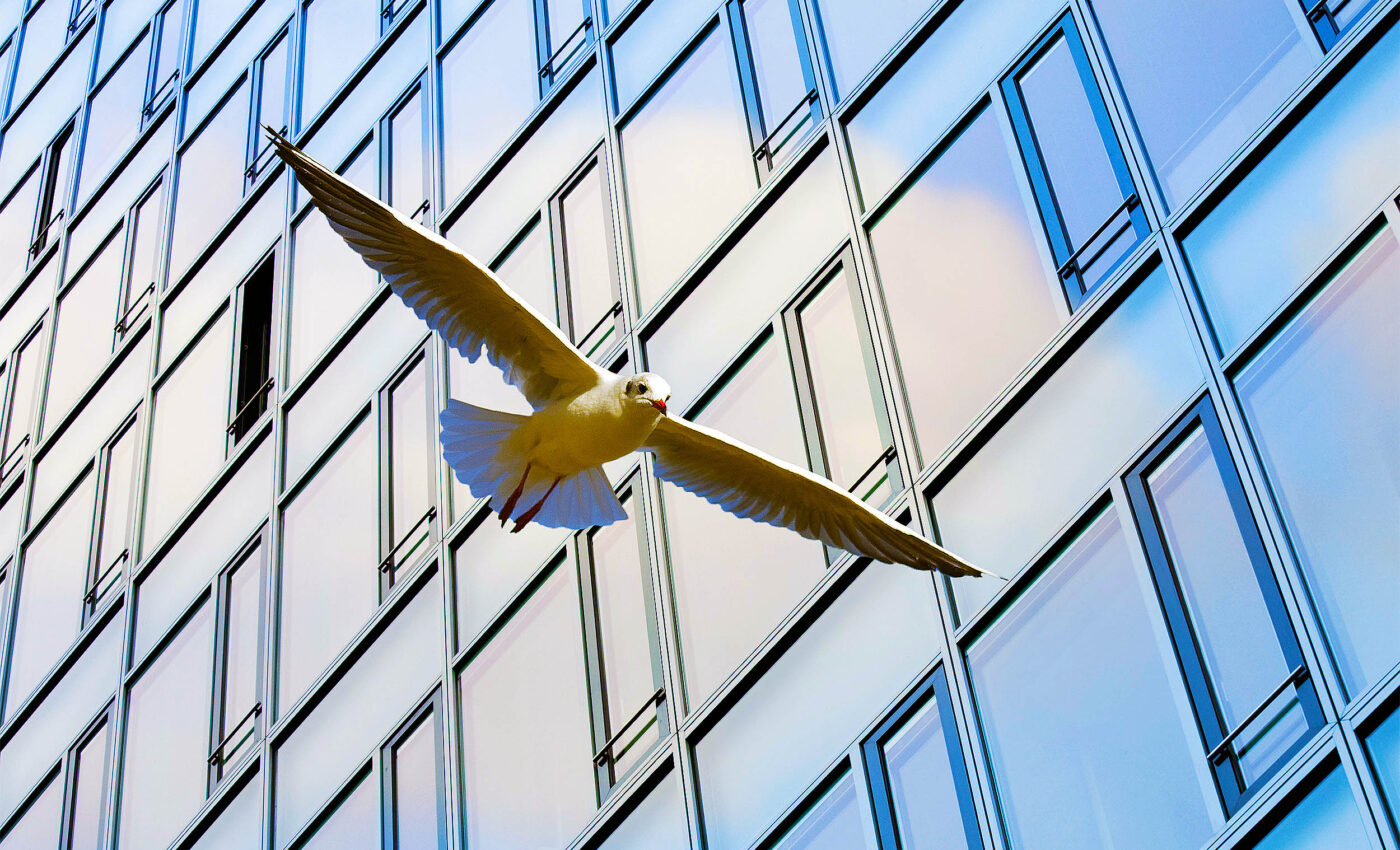
Blue light in cities increases risk of bird collisions with buildings
In a recent study from The University of New Mexico, researchers David Tan and Nicholas Freymueller reveal that blue light significantly increases the risk of building collisions for night-migrating birds.
The research illuminates a crucial but previously underexplored factor contributing to avian fatalities in urban environments.
The global context of bird-building collisions
Each year, hundreds of millions of birds perish in North America alone due to building collisions. A significant portion of these incidents involve migratory species.
Although well-documented in North America, the bird collisions issue also casts a shadow across tropical regions. This is particularly true within Asian and African cities, where substantial gaps in knowledge persist.
A new approach to studying urban bird fatalities
The researchers adopted a unique methodology. By expanding their study across Singapore – a densely populated city-state with over 100,000 buildings – they utilized ecological niche modeling. This approach helped predict collision hotspots by identifying a “death niche” for the city’s birds.
“It’s a counterintuitive way to think about niche models, but if we can use environmental factors like temperature and rainfall to predict where living animals occur, it makes sense that the same methods can also be used to predict where birds might die from building collisions since these collisions are strongly affected by the urban environment,” explained Tan.
Illuminating findings: the crucial insights and their implications
The study authors analyzed nearly 225 bird-building collision records from 2013-2020. They found that migratory pittas and resident pigeons were most affected. Pittas were particularly sensitive to blue light, showing increased collision frequencies.
“These results confirm what we previously suspected about pittas from bird banding studies conducted in the 1960s – that pittas are strongly attracted to light when they migrate at night,” said Tan. “This is the first time anyone has demonstrated a specific attraction to blue light in this group of birds.”
The researchers also noted that non-migratory birds like green pigeons and emerald doves often collide with buildings near forest edges. This is likely due to their movement through the urban landscape as they navigate between fragmented forest patches.
Proactive measures for urban planning
Drawing on their findings, the researchers identified potential future collision hotspots in Singapore. They linked these hotspots to planned developments near forests and high blue light pollution areas.
“One of the benefits of working in Singapore is that the government tends to plan everything well ahead of time,” noted Tan.
“Because of this, we were able to use long-term land-use plans published by the Singapore government to predict where future collision hotspots might occur, which will in turn allow urban planners and developers to incorporate bird-friendly measures into building designs even before the first foundations are laid.”
Recommendations for mitigating bird collisions
The research underscores a key environmental issue and provides practical insights for urban planning and bird conservation strategies.
To mitigate the identified risks of collisions, the experts recommend using bird-safe architectural elements. These include bird-friendly glass and shading devices, especially in forest-adjacent high-risk areas.
Additionally, they suggest using warmer LED lighting and shielding to reduce light spill. This can lessen the negative effects of blue light pollution on migratory birds.
“Our discovery that blue light pollution increases the building collision risk of night-migrating birds in tropical Asia adds to the small but growing number of studies worldwide showing that blue light pollution attracts migratory birds,” Tan concluded. “Reducing blue light emissions at night during the migratory months could help reduce the number of bird deaths in cities, especially in tropical Asia.”
More about light pollution and bird collisions
Light pollution significantly contributes to bird collisions, especially affecting migrating birds. Many species of birds migrate at night and rely on natural light cues from the moon and stars for navigation.
Artificial lights, such as those from buildings, street lamps, and other infrastructure, can disorient these nocturnal migrants, leading to what is often referred to as “fatal light attraction.”
When birds encounter intense artificial light, particularly in cloudy or foggy conditions, they can become disoriented and circle the light sources until they collide with an object or exhaust themselves.
This phenomenon is particularly observed in cities with skyscrapers and during events like the “Tribute in Light” in New York, where beams of light have been known to attract and disorient large numbers of birds.
Efforts to reduce these collisions include initiatives such as “Lights Out” programs in various cities, where building owners turn off or dim non-essential lights during peak migration periods in the spring and fall.
These programs aim to decrease the risks to birds by minimizing the attractions and distractions caused by artificial lights, thereby helping to ensure safer migration paths for these species.
The study is published in the journal Conservation Biology.
—–
Like what you read? Subscribe to our newsletter for engaging articles, exclusive content, and the latest updates.
Check us out on EarthSnap, a free app brought to you by Eric Ralls and Earth.com.
—–













